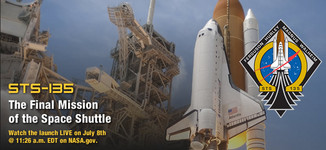ChrisReid
Super Soaker Collector / Administrator
The last mission of the Space Shuttle, STS-135, is currently planned to launch on Friday morning EST. LOAF is on site for this exciting event - follow him on Twitter for the live commentary!
--
Original update published on July 7, 2011
--
Original update published on July 7, 2011
Last edited by a moderator:


















